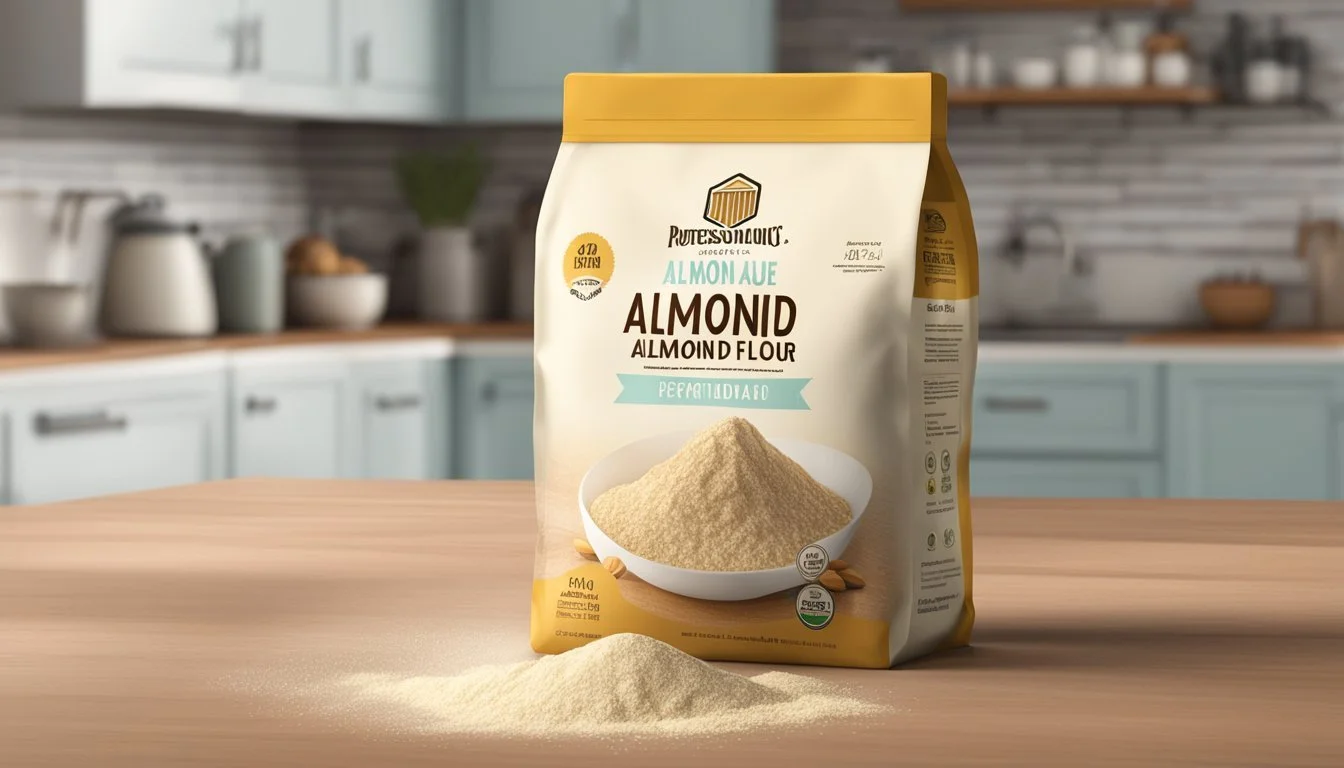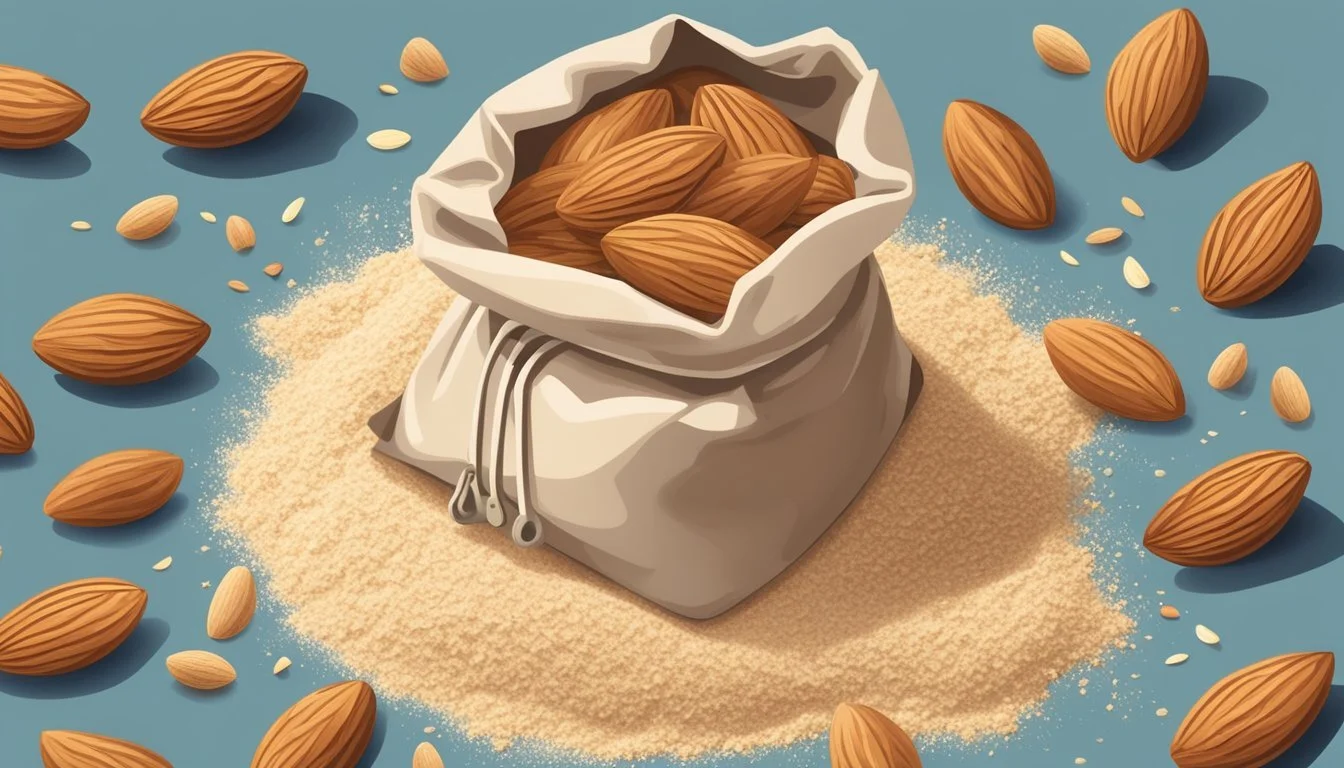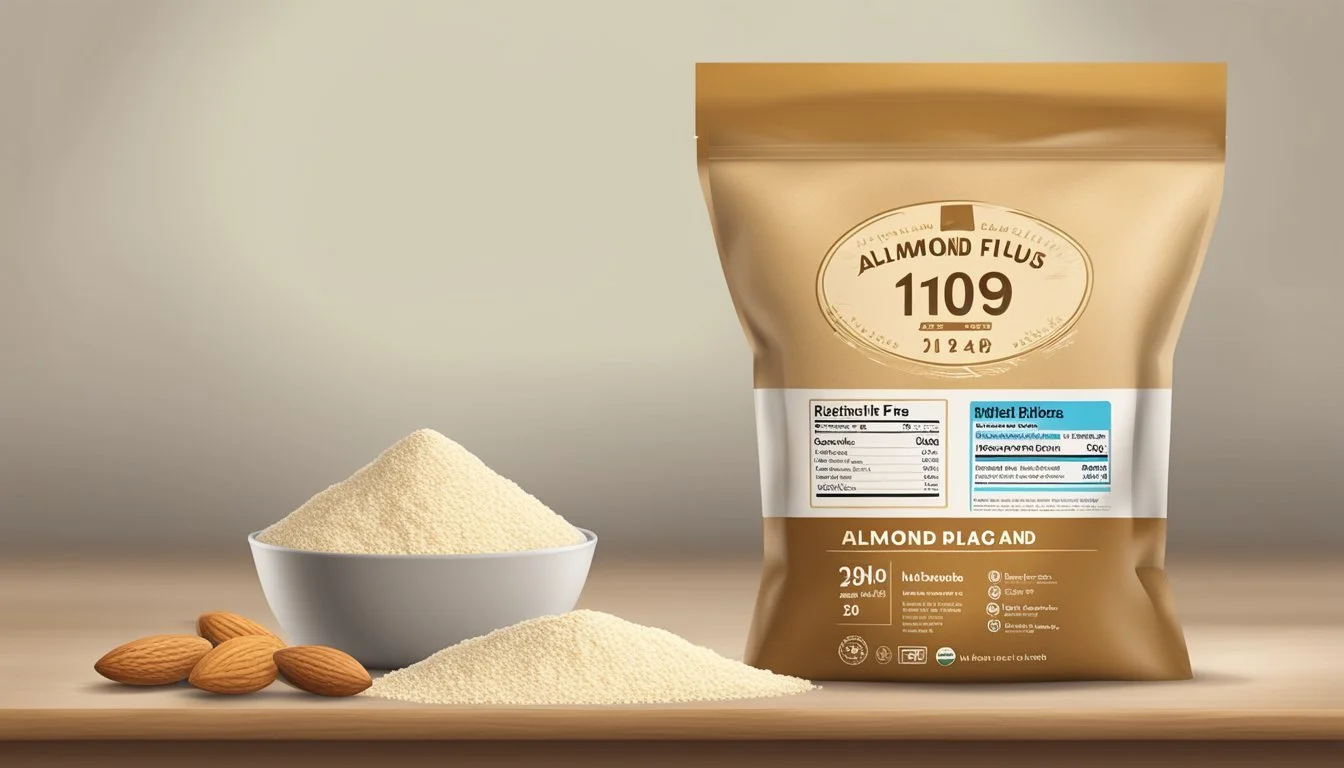Does Almond Flour Go Bad?
Understanding Shelf Life and Storage Tips
Almond flour has become a popular alternative to traditional wheat flour, especially among those with gluten sensitivities or those following low-carb diets. Composed of ground almonds, this flour offers a host of nutritional benefits, including protein, fiber, and healthy fats. However, unlike its wheat counterpart, almond flour contains natural oils that can spoil over time. This sensitivity to spoilage raises important questions about storage, shelf life, and recognizing when the flour is no longer suitable for use.
The shelf life of almond flour can vary depending on how it is processed and stored. Typically, almond flour will last about four months when stored in a pantry and up to twelve months if kept in the refrigerator. For long-term preservation, freezing almond flour can extend its usability by up to two years past the best before date. It is crucial to store almond flour in an airtight container to protect it from moisture and other contaminants that can accelerate spoilage.
Indications of almond flour going bad include changes in color, with the appearance of dark specks or streaks, development of a bad odor, or the presence of mold, often signaled by blue or green tints. The presence of any of these signs suggests that the almond flour should be discarded to avoid the risk of food poisoning. Regular checks on almond flour, especially before use, are recommended to ensure the quality and safety of the ingredient.
Understanding Almonds and Almond Flour
Almond flour offers a gluten-free alternative to wheat flour, rich in nutrition and versatile in cooking. This flour supports various dietary preferences, such as keto and paleo diets, and is acclaimed for its use in a myriad of recipes from pancakes to cakes.
Composition and Nutrition
Almond flour is derived from ground almonds and is renowned for its high nutritional value. It is particularly dense in healthy fats, specifically monounsaturated fats, which contribute to heart health. The flour is also a good source of protein, fiber, vitamin E, and magnesium. Unlike traditional wheat flour, almond flour is gluten-free, making it an essential ingredient for those with gluten sensitivities or celiac disease.
Protein Content: Almonds provide a substantial amount of protein, which is preserved in the flour.
Fiber: Aiding in digestion, almond flour contains a significant amount of dietary fiber.
Vitamin E & Magnesium: These are vital for maintaining healthy skin and bodily functions, respectively.
Varieties and Uses in Cooking
There are mainly two types of almond flour, blanched and unblanched, also known as almond meal. The recipe requirements generally dictate the choice between them. Almond flour is versatile and can be integrated into countless recipes, including cakes, pancakes, cookies, and various other baking endeavors. Its mild, nutty flavor complements both sweet and savory dishes, rendering it popular among those following paleo or keto diets due to its low carbohydrate content.
Blanched Almond Flour: Made from almonds with the skins removed prior to grinding.
Almond Meal: Includes the skins, resulting in a coarser texture.
Comparison to Wheat Flour
When comparing almond flour to traditional wheat flour, the most notable difference is the absence of gluten in almond flour. While gluten contributes to the rise and elasticity in baked goods, almond flour requires different considerations in recipes. For instance, binding agents like eggs may be needed for structure. Furthermore, almond flour is significantly higher in fat content, yet it contains fewer carbohydrates, making it suitable for those on a keto diet. Baked goods made with almond flour tend to have a moister texture and richer flavor.
Fat Content: Higher in almond flour, providing a tender crumb to baked goods.
Gluten-Free: Ideal for gluten intolerances but may require adaptations in traditional baking recipes.
Shelf Life and Expiration
The shelf life of almond flour can vary depending on whether the package is opened or unopened, as well as the conditions under which it is stored. Understanding expiration dates is crucial to ensuring the flour's freshness and usability.
Identifying Expiration Dates
Manufacturers typically place a "best by" date on almond flour packages, indicating the timeframe within which the product is at its peak quality. For unopened almond flour, one can expect it to last:
Pantry: Up to 4 to 6 months
Refrigerator: 6 to 12 months
Freezer: Up to a year or longer
Once opened, almond flour's shelf life reduces slightly, but proper storage can extend its usability. Opened almond flour should be stored in:
An airtight container: To minimize exposure to air and moisture
The refrigerator: To keep for up to 6 months
Almond flour is more prone to spoilage compared to all-purpose flour due to its higher fat content. Consumers should look for changes in color, smell, or the presence of mold, which indicate that the flour has gone bad. After the expiration date, almond flour might still be viable for a short period if no spoilage signs are visible, but it's advisable to assess its condition before use.
Optimal Storage Conditions
To maintain the freshness and extend the shelf life of almond flour, it is crucial to store it properly. Appropriate storage shields it from heat, moisture, and other conditions that can lead to spoilage.
At Room Temperature
They should store almond flour in a cool, dry place, such as a pantry or kitchen cabinet. The key aspects for room temperature storage include:
Location: A pantry away from heat sources and sunlight.
Container: An airtight container is essential to prevent moisture and pests.
Refrigeration Techniques
Refrigerating almond flour can significantly prolong its usability period beyond what is typically possible at room temperature. Useful refrigeration tips are:
Airtight Storage: Use an airtight container or a resealable plastic bag to restrict air exposure.
Temperature: Keep the fridge temperature steady to avoid moisture buildup which can result from condensation.
Freezing for Extended Preservation
Freezing almond flour is the ultimate method for extending its shelf life for several months. To properly freeze almond flour, they should:
Containers: Opt for freezer-safe bags or containers.
Labeling: Clearly label the bags or containers with the storage date.
Thawing: When ready to use, one should thaw the flour in the refrigerator overnight to prevent any condensation and maintain consistency.
Detecting Spoilage and Rancidity
Determining whether almond flour has gone bad involves a keen eye and a discerning sense of smell. Almond flour that exhibits visual or olfactory indicators of spoilage should not be used, as it can affect both the taste and safety of your food.
Visual Inspection for Mold and Discoloration
When inspecting almond flour for spoilage, start by looking for mold. Mold may present as white, green, or black spots or fuzz on the surface of the flour. This is a clear sign that the flour has been compromised. Additionally, fresh almond flour typically has a uniform, pale tan color, just off-white. Any discoloration, such as dark spots or streaks, indicates degradation.
Signs of mold growth: Look for colored fuzz or spots.
Discoloration: Notice any dark or irregular areas against the generally pale background.
Smell and Taste for Freshness and Quality
Healthy almond flour possesses a mild, nutty aroma. An off smell suggests the fats within the flour have begun to oxidize, resulting in rancidity. A sour or bitter odor is a definite indication the flour is no longer fresh. Tasting is not recommended if the smell is off, as spoiled flour can cause food poisoning.
Odors: Detect any off smells that deviate from the typical nutty scent.
Quality: Assess the freshness through the scent before even considering a taste test.
Troubleshooting Common Problems
Almond flour can present specific challenges that affect its quality and usability. Proper storage is crucial to avoid clumping caused by moisture and to prevent pest infestations.
Dealing with Clumping and Moisture
Almond flour can absorb moisture from the air, leading to clumping or the development of wet and sticky spots. If clumps are discovered, they often signify that the flour has been exposed to moisture, and in some cases, these clumps can become moldy or spoil. To protect almond flour from moisture:
Storage Conditions: Always store almond flour in an airtight container or a resealable bag to shield it from moisture.
Reduce Clumping: If clumps do form, sift the flour through a fine mesh to separate the usable flour from any larger, hardened clumps.
Assess for Spoilage: Clumps that are discolored or emit an off odor should be discarded to prevent potential health issues.
Preventing and Responding to Pest Infestations
Pantry pests can find their way into almond flour if it is not properly stored. It's critical to store almond flour in a way that deters these pests and to know how to respond if they are discovered.
Pantry Pests: Using sturdy, impermeable containers with tight-fitting lids can make it difficult for insects to access and contaminate the flour.
Regular Inspection: Regularly check the almond flour for any signs of pests, such as tiny holes in the bag, webbing, or live insects.
Immediate Action: Upon detecting pests, dispose of the almond flour immediately to avoid cross-contamination with other food products.
Almond Flour in Special Diets
Almond flour serves as an integral component in various special diets, enhancing both the nutrient profile and culinary variety for those with specific dietary needs. Attesting to its versatility, almond flour finds its place as a staple in gluten-free and low-carb diets.
Benefits for Gluten-Free and Low-Carb Diets
Gluten-Free: Almond flour is naturally gluten-free, making it an excellent alternative for individuals with celiac disease or gluten sensitivity. Its use as a flour substitute allows those on a gluten-free diet to enjoy baked goods without the risk of gluten exposure impacting gut health.
Baking: Almond flour can replace wheat flour in recipes for cakes, cookies, and bread, providing a similar texture and taste.
Binding: It acts as a binding agent in recipes, much like traditional flour, ensuring that gluten-free recipes hold together well.
Low-Carb and Keto: With a significantly lower carbohydrate content than wheat flour, almond flour is a favorite among those following low-carb or ketogenic diets.
Macronutrients: In comparison to traditional flour, it offers a reduced carb intake, which is crucial for maintaining ketosis.
Energy: It is dense in energy, providing healthy fats and protein that align with the macronutrient ratios required in these diets.
Contribution to Nutrient Intake
Almond flour is not only a functional ingredient but also a nutritious one. It contains a range of micronutrients and macronutrients beneficial to health.
Fiber: It is a good source of dietary fiber, which supports digestive health and can help in maintaining healthy blood sugar levels.
Protein: A moderate source of protein, almond flour can contribute to the daily protein intake, which is vital for tissue repair and muscle growth.
Healthy Fats: Rich in monounsaturated fats, it contributes to the intake of healthy fats that are important for heart health and can help with satiety.
Paleo-Friendly: Being a product of almonds, it's suitable for those on a paleo diet, which emphasizes whole foods and eliminates grains.
With its inclusion in specialized diets, almond flour plays an important role in not just emulating the culinary characteristics of traditional grain flours, but also in providing additional health benefits.
Responsible Usage and Safety Tips
Maintaining the quality of almond flour is crucial for both health and culinary outcomes. Safety is paramount in its handling and usage, especially to prevent food poisoning.
Proper Thawing and Handling
When using almond flour that has been refrigerated or frozen, proper thawing is key. Ensure the thawing process happens gradually, avoiding any sudden exposure to heat, which can lead to condensation and moisture in the flour. Moisture is a breeding ground for bacteria, so it's necessary to maintain a dry environment for almond flour. For safe handling, always:
Use clean utensils and dry hands to avoid introducing moisture.
Transfer the needed amount of flour to a separate container to prevent cross-contamination.
Seal packaging tightly after use to restrict airflow and potential contaminants.
Caution Against Food Poisoning
Expired almond flour, like all food products, poses a risk for food poisoning. To mitigate this risk, observe the following precautions:
Check the Flour: Regularly inspect the almond flour's color and smell. Any dark spots, discoloration, or off-odors are indicators that it should not be consumed.
Storage: Keep almond flour in a cool, dark place away from direct sunlight and heat to prevent rancidity. Ideal storage is in airtight containers or resealable bags.
Expiration Date: Heed the expiration date, but also trust your senses to discern if the flour has gone bad prior to the indicated date. When in doubt, err on the side of caution and discard compromised flour.






